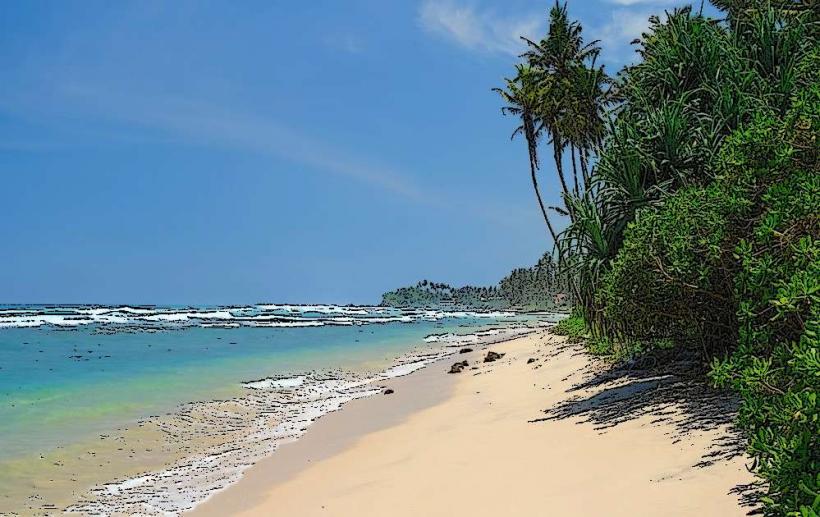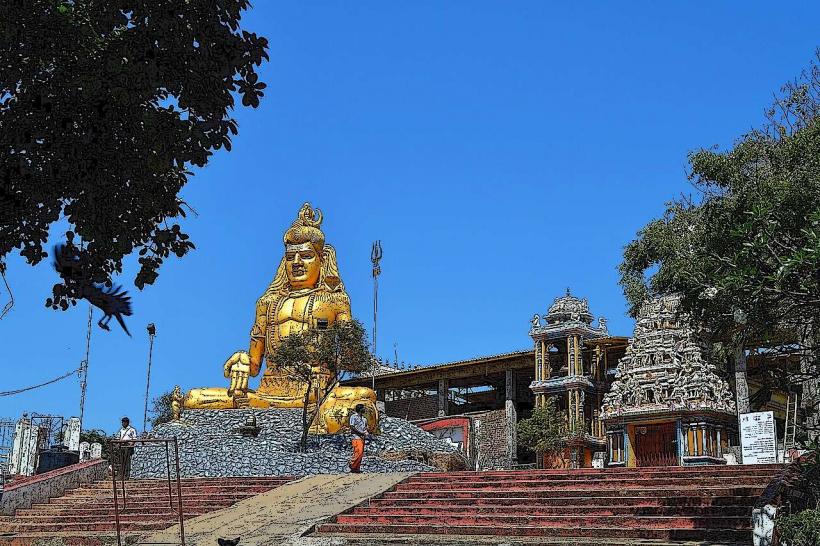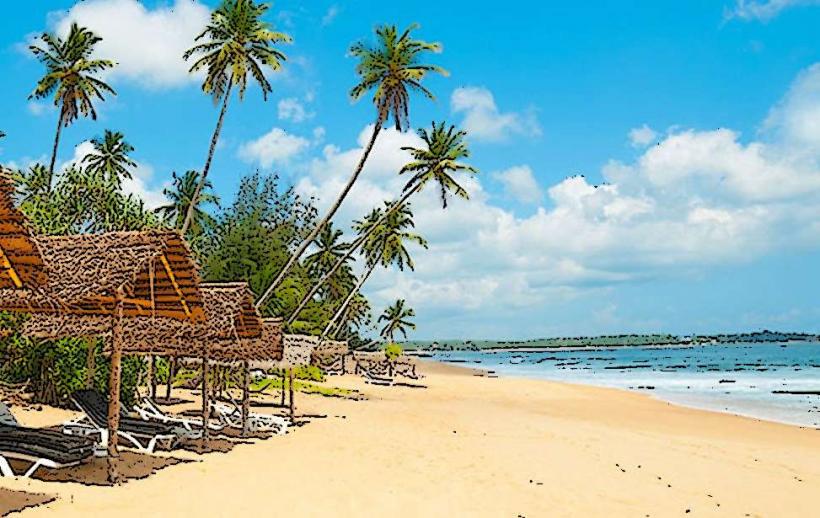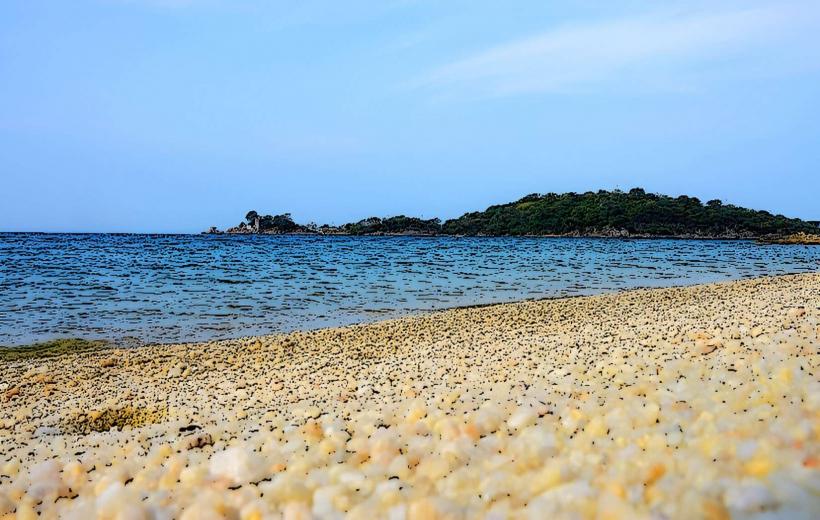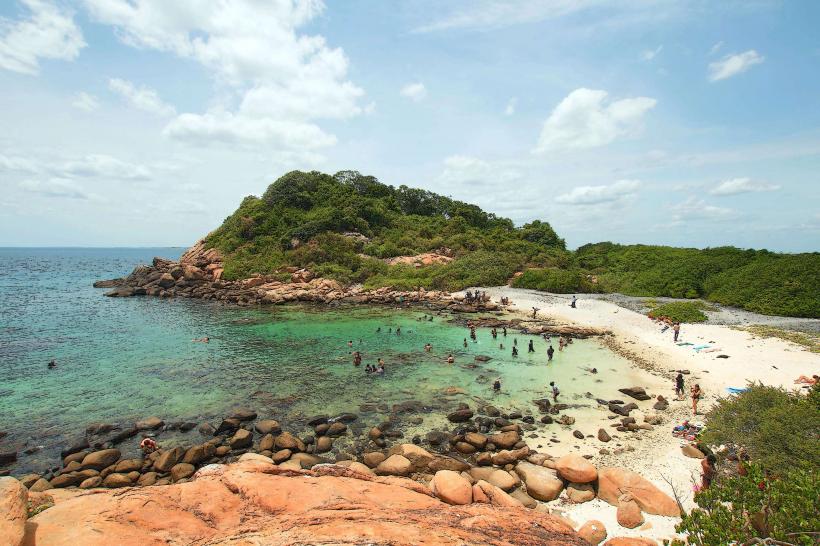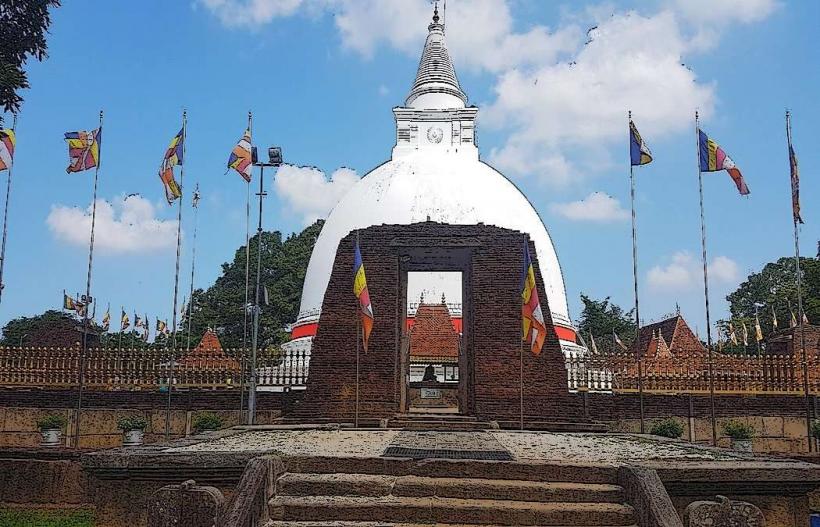Information
Landmark: Fort FrederickCity: Trincomalee
Country: Sri Lanka
Continent: Asia
Fort Frederick is a historic military fort located in Trincomalee, a coastal city in the Eastern Province of Sri Lanka. The fort has a long and significant history, dating back to the colonial period, and it is one of the key landmarks in Trincomalee. Originally built by the Portuguese, it was later expanded by the Dutch and British. Today, Fort Frederick remains an important part of the city’s heritage, offering a glimpse into Sri Lanka's colonial past.
1. Overview
- Location: Trincomalee, Eastern Sri Lanka.
- Constructed by: Originally built by the Portuguese in the 17th century, the fort was later expanded and fortified by the Dutch and British.
- Current Use: The fort is still in use by the Sri Lankan military, and it remains an active military base.
- Accessibility: Although still a functioning military installation, the fort is open to the public for visits during certain hours.
2. Historical Background
Portuguese Era (1623): The Portuguese originally constructed a fort at this location in 1623. They established it as a military stronghold to control the strategic coastal area and secure their position in the region. The fort was built on a rocky outcrop, offering a commanding view of the Trincomalee Harbor.
Dutch Expansion (1665): After the Dutch seized control of Trincomalee in 1665, they significantly expanded the fortifications. The Dutch made use of the existing Portuguese structures and built additional walls, bastions, and gates. The fort became one of the Dutch East India Company's key military and naval outposts in Sri Lanka.
British Era (1795): Following the British invasion of Sri Lanka in 1795, the British took control of Fort Frederick. They further reinforced the fortifications and used the site as a military base and administrative center. The British continued to use the fort during their colonial rule until Sri Lanka's independence in 1948.
Post-Independence: After Sri Lanka gained independence, Fort Frederick became a base for the Sri Lankan military, and it remains in military hands today. Although it is an active military installation, the fort is open for public visits, allowing people to explore its history and architecture.
3. Architecture and Structure
Location and Layout: Fort Frederick is situated on a promontory overlooking the Trincomalee Harbor, providing excellent strategic views. The fort's architecture reflects a blend of Portuguese, Dutch, and British military styles. The fort's design includes thick stone walls, bastions, and gates built to withstand attacks.
Main Gate and Bastions: The fort's entrance is marked by a prominent main gate that bears the coat of arms of the Dutch East India Company. The fort is surrounded by high walls and four corner bastions that provide defense against potential naval threats from the harbor. The bastions are named after various figures in history, such as Dutch Admiral Joris van Spilbergen.
Structures Inside the Fort: Within the fort, you can find several historical buildings and ruins that reflect its colonial past, including:
- The Koneswaram Temple: A Hindu temple located inside the fort. The temple, dedicated to Lord Shiva, predates the fort and is considered an important religious site.
- Cannon and Artillery: Several cannons and artillery pieces from the Portuguese, Dutch, and British periods remain scattered around the fort.
- Other Structures: Some older buildings, including officers' quarters and administrative buildings, have been preserved or renovated over the years.
4. Key Features and Attractions
Koneswaram Temple Inside the Fort: As mentioned, Koneswaram Temple is an important Hindu temple located within the fort premises. It has been a site of religious worship for centuries, and the temple's location offers a spectacular view of the Indian Ocean and Trincomalee Harbor. The temple is dedicated to Lord Shiva and is one of the significant religious sites in Trincomalee.
Trincomalee Harbor Views: The fort offers panoramic views of the Trincomalee Harbor, one of the finest natural harbors in the world. The view from the fort is particularly stunning, providing a vantage point to observe the harbor, the surrounding coastline, and the nearby Swami Rock, where the Koneswaram Temple is located.
The Dutch Gateway: One of the most notable landmarks of the fort is the Dutch Gateway, an impressive archway that once served as the main entrance to the fort during the Dutch colonial period. The gateway is an important example of Dutch colonial architecture and is one of the best-preserved features of the fort.
Cannon and Fortifications: The fort's defensive cannons, which date back to the Portuguese and Dutch periods, are an iconic feature of the fort. The stone walls and bastions offer a glimpse into the fort's military history and strategic importance.
5. Visiting the Fort
Open to the Public: Although still an active military base, the fort is open to the public for visits. The Sri Lankan military occasionally conducts guided tours for visitors, explaining the fort’s historical significance and offering insights into its architecture and role during colonial times.
Access and Entry: To visit the fort, travelers can take a tuk-tuk or a taxi from the center of Trincomalee, which is only about 2 kilometers away from the fort. The entry to the fort is generally free, but donations for the upkeep of the site are encouraged.
Timings: Visitors can explore the fort during daylight hours, but access may be restricted at times due to military activities. It is always a good idea to check with local authorities for the latest information on visiting hours.
6. Nearby Attractions
- Trincomalee Town: The fort is located near the center of Trincomalee, so visitors can explore other attractions in the town, such as the Trincomalee Beach, Marble Bay, and the Natural Harbor.
- Nilaveli Beach: Located a short drive away from Trincomalee, Nilaveli is known for its white sandy beaches and is a popular spot for swimming and snorkeling.
- Pigeon Island National Park: A short boat ride from Nilaveli, this marine national park is famous for its rich coral reefs and marine life, making it a great destination for snorkeling and diving.
7. Best Time to Visit
The best time to visit Fort Frederick is during the dry season, which lasts from May to September, when the weather is warm and dry, making it perfect for exploring the fort and enjoying the stunning coastal views. The cooler months of November to February are also ideal for a visit.
8. Conclusion
Fort Frederick is a must-visit for history enthusiasts, architecture lovers, and anyone interested in exploring Sri Lanka’s colonial past. Its strategic location, impressive architecture, and historical significance make it one of the most important landmarks in Trincomalee. With its combination of military history, religious sites, and scenic beauty, Fort Frederick offers a unique experience for visitors to Sri Lanka.


